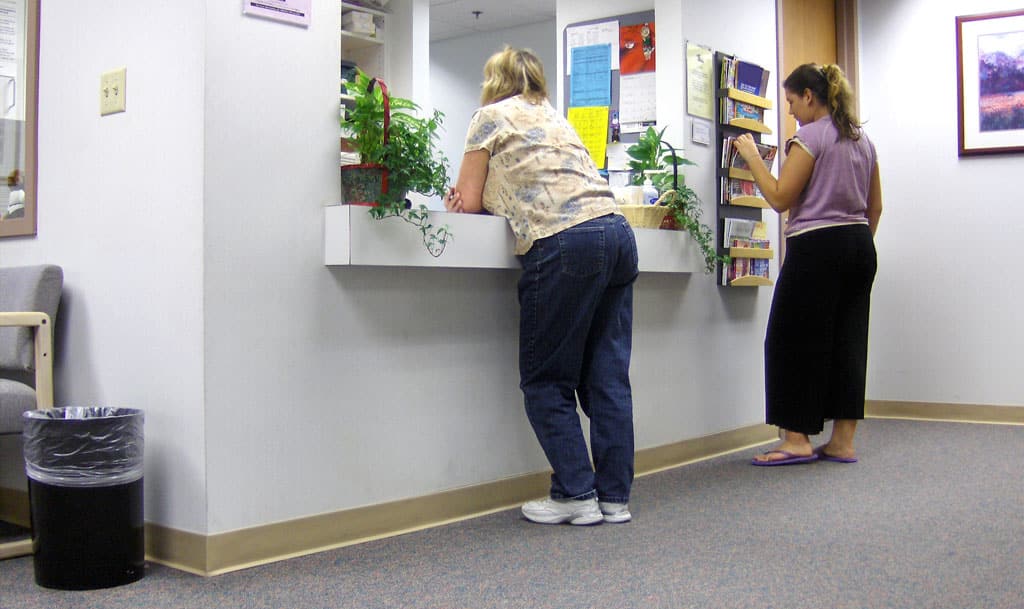With 20 million people now enrolled in health plans under the Affordable Care Act, the need for primary care providers is growing. Paying for coverage will be difficult for some of these new participants, but finding a primary care physician will be challenge that’s just as daunting for many of them.

The 2016 Survey of America’s Physicians shows just how tough it might be for them to get a doctor, and not have to repeat that chore in the near future. It also sheds light on the reasons for the difficulty. According to the survey, 80 percent of physicians say they are at capacity or overextended. Other findings from The Physicians Foundation-Merritt Hawkins survey, which garnered more than 17,000 physician responses, are also notable:
- Almost 43 percent of physicians said their compensation is tied to quality, including patient satisfaction. Yet only 14 percent of physicians surveyed believe they have the time necessary to provide the highest standards of care.
- Twenty-seven percent of physicians limit Medicare or don’t see Medicare patients at all, and 48 percent of physicians plan to cut hours, retire, take nonclinical jobs, become concierge practices, or otherwise limit patient access to their practice. Eighteen percent of physicians who are 45 or younger said they plan to cut back on hours.
- More than 52 percent of physicians report they’re at full capacity; more than 28 percent of respondents believe they are overextended or overworked.
- Seventy-two percent of respondents reported that external factors like third-party authorizations are detracting from the quality of care.
- Forty-eight percent gave the Affordable Care Act a “D” or “F,” and only 3 percent gave it an “A.”
More physicians, even those who are comparatively young physicians, are retiring or cutting back their workloads. Who will replace them? New allopathic and osteopathic physicians have been joining the workforce at a relatively flat rate for the past four years, according to HealthAffairs.
HealthAffairs looked at primary care workforce data for the past four years, comparing the annual primary care residency match data with primary care nurse practitioner (NP) graduation rates. Although the number of NPs graduating continues to surge, physician numbers, both allopathic and osteopathic, show only a minor increase.
Thus, many of the newly insured are getting care from NPs and physician assistants. Most patients understand that routine ailments don’t call for a specialist and welcome the convenience of a flu shot or blood pressure screening at their local pharmacy or school gym. Accountable care organization care teams can offer out-of-office advice and tools for monitoring patients’ health, such as dietary recommendations and prescription reminders.
Nevertheless, most patients will need a physician at some point in their lifetime, and these surveys suggest their choice of physicians will be increasingly limited. Health plan restrictions reduce the options even more in many cases.
Fighting burnout
On the other side of the office door, primary care physicians will have to find some workload relief and long-term strategies for fighting burnout. Unfortunately, many caregivers have a hard time saying no to that “just-one-more” person who needs care.
Delegation may be a partial solution. Practices can provide care to an extended number of patients through NPs and PAs. Many physicians already depend on advanced practice RNs and PAs, although they’re somewhat ambivalent as to how much these practitioners should be allowed to do. Some worry that autonomy for NPs and PAs within practices could prompt them to demand their own panels of patients.

Practice management systems that function reliably and unobtrusively can help alleviate the administrative load for physicians and other clinicians. There may be relief for some in joining a health system or merging practices (both topics have been discussed in recent blogs). More than six years after the Affordable Care Act became law, the latest attempts at healthcare reform have created a race within the healthcare industry to get bigger. As the Wall Street Journal reported last year, “supersized medical practices” are becoming more commonplace nationwide.
Healthcare became a major issue during the election season, but regardless of who sits in the White House, the conversation must continue. All healthcare stakeholders must address these issues more proactively to support physicians and enhance the medical practice environment. We don’t have to look far to see what a chronic physician shortage looks like or see its disastrous affect on public health.



